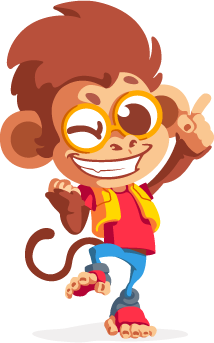Escola Games | Jogos Educativos
https://www.escolagames.com.br
Teacher's support sheet

Dog Puzzle
Do you like dogs? And puzzle?
We put these two passions together in a super fun game with dozens of dogs for you to assemble and have fun.

Teacher's tips
Level of education: Elementary School
Age: 05 to 08 years
Puzzles are much more than just puzzle games. There are many skills included in this activity like; figure discrimination ability, logical thinking, promoting hand-eye coordination, memory development and much more. The puzzle presented here has pieces that fit together similar to Tangram, an ancient Chinese game. As it is a game similar to Tangram, its pieces look like geometric shapes, making this activity even more interesting and very useful in mathematics. [FIM-DICA]
Learner outcomes
Develop motor coordination;
Favor the development of memory performance;
Develop different thinking skills such as: observe, compare, analyze and synthesize;
Analyze figures and expand the notions of composition and decomposition from the fragmentation of an image;
Perceive the different positions of fragmented figures in an image;
Develop self-confidence in problem solving;
Analyze figures and expand the notions of composition and decomposition from the fragmentation of an image;
Perceive the different positions of fragmented figures in an image;
Stimulate cooperation among colleagues by promoting activities in pairs or groups;
Teachers' goals
Offer the game as a didactic resource to fix the content worked in the classroom;
Expand students' knowledge;
Work with students on motor skills, concentration skills and logical thinking;
Work on motor coordination through the use of the mouse;
Enable the development of different thinking skills, such as observation, comparison, analysis and the ability to synthesize;
Suggestions of approaches for the teacher
(Suggestion 1) Assemble logical sequences using shapes and colors;
(Suggestion 2) Print drawings and ask the students to paint with crayons, colored glue, colored pencils, then make cuts by fragmenting the drawing, shuffle it and ask the students to assemble it again, simulating a puzzle;
(Suggestion 3) Build assembly and assembly toys with reusable objects such as: shoe boxes, bottle caps, milk cartons, plastic cups, etc.;
(Suggestion 4) Ask students to do research on where the Tangram came from, then ask them to assemble one;
(Suggestion 5) Make cutouts in magazines assembling geometric shapes;
(Suggestion 6) Work with figure discrimination, for example, print several shuffled figures on a sheet, place some figures facing to the right and some to the left. Inform the correct template, whether it is facing right or left. Then ask students to color the pictures that are incorrect;
(Suggestion 7) Take a Rubik's Cube to the classroom, tell the story of how it came about and ask the students to try to put it together. Show them why it's so complicated to put together;
(Suggestion 9) Use of Montessori sensory material composed of 10 geometric solids: the cube, the sphere, the cone, the cylinder, the ovoid, the ellipsoid, the prism with a square base, the prism with a triangular base, the pyramid with a square base and the pyramid with a triangular base;
(Suggestion 10) Origami workshop. Origami is also an ancient technique that requires a lot of concentration and patience. Promoting this type of activity is essential in the development of the child.
More about the content
Get to know other games that work on similar themes.
Puzzle
https://www.bestschoolgames.com/games/puzzle/
Monsters Puzzle
https://www.bestschoolgames.com/games/monstersPuzzle/
Animals Puzzle
https://www.bestschoolgames.com/games/animalsPuzzle/
Super Heroes Puzzle
